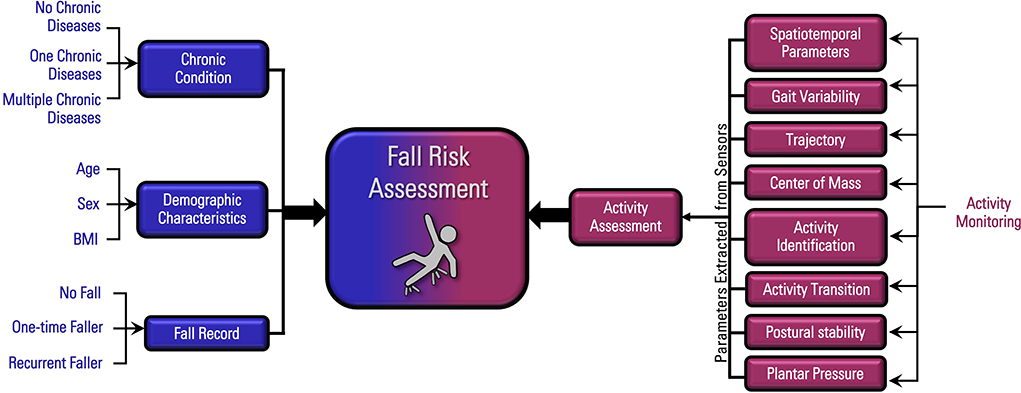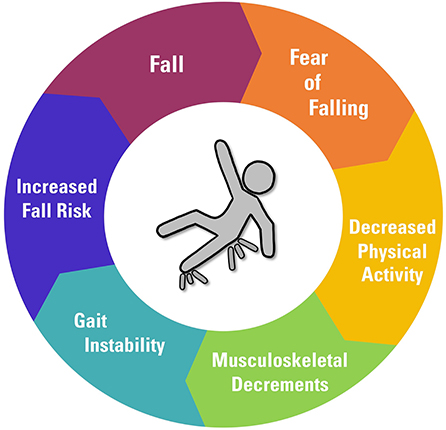Some Ideas on Dementia Fall Risk You Should Know
Some Ideas on Dementia Fall Risk You Should Know
Blog Article
Excitement About Dementia Fall Risk
Table of ContentsThe Buzz on Dementia Fall RiskSome Of Dementia Fall RiskSome Known Details About Dementia Fall Risk 5 Easy Facts About Dementia Fall Risk ShownDementia Fall Risk for Dummies
Based on indicators and signs and symptoms, such as proof of head injury or a new focal neurologic deficit, computed tomography or MRI of the brain might be indicated. An analysis for sources of syncope should be carried out just if there is strong suspicion, as in the instance of reoccurring, unusual falls
Doctor use a loss danger evaluation to recognize your threat factors for falling and make useful referrals. Some individuals attempt to lower their fall risk by restricting their task or making every effort to be much more careful. These well-intentioned behaviors aren't sufficient - Dementia Fall Risk. A fall risk evaluation is necessary since recognizing which variables raise your chances of dropping assists you: Decrease your threat of dropping or harming yourself.
Optimize your ability to move and be active. Maintain a healthy, independent life. All adults 65 years and older ought to have a first loss threat screening. Your doctor could ask you whether you: Feeling unstable when standing or strolling. Have actually fallen in the past year. Bother with falling. If you answer yes to any of these inquiries, your doctor will certainly recommend an added, more thorough evaluation.
Dementia Fall Risk Fundamentals Explained

Explore this comprehensive nursing treatment strategy and management guide to effectively stop risk for falls amongst individuals. Acquire vital understanding regarding the nursing evaluation, taking care of medical diagnosis, and objectives particularly customized to clients that go to risk for drops. A is defined as an occasion that results in an individual coming to relax inadvertently on the ground or flooring or various other reduced level (THAT, 2021).
According to the Centers for Disease Control and Avoidance (CDC),, causing over 34,000 fatalities for that age team. Dropping is the second leading reason of over at this website death from unintended injuries internationally. Fatality from falls is a major and native to the island issue among older people. It is estimated that fall fatality prices in the U.S

Each year, over 800,000 people are hospitalized since of falls. Registered nurses play a major role in avoiding falls for view it now their clients through education, assessing loss risk, developing much safer atmospheres, and providing treatments in preventing injuries from drops.
Patient will certainly demonstrate careful avoidance procedures. Person and caregivers will certainly apply techniques to raise safety and stop falls in the home. Autumns are because of numerous variables, and an alternative method to the private and atmosphere is necessary. Mean an individual is thought about at high threat for drops after the screening.
Dementia Fall Risk Fundamentals Explained
A calls for utilizing a verified tool that scientists have examined to be helpful in calling the causes of drops in an individual. The level of fall danger can be established making use of the assessment of intrinsic and external factors.
People are most likely to fall again if they have actually maintained several falls in the past six months. The older population is at raised risk of fall-related readmissions based upon a study recognizing the variables predictive of repeat falls associated results (Prabhakaran et al., 2020). Persons with damaged understanding and disorientation may not recognize where they are or what to do to help themselves.
In addition, confusion and damaged judgment increase the person's opportunity of dropping. The capability of people to safeguard themselves from drops is impacted by such variables as you can find out more age and growth. Older individuals with weak muscular tissues are more probable to fall than those who keep muscular tissue stamina, flexibility, and endurance. These changes consist of decreased aesthetic function, damaged color understanding, change in center of mass, unstable stride, reduced muscle mass stamina, lowered endurance, modified depth assumption, and delayed response and response times.
Facts About Dementia Fall Risk Uncovered
Less comparison level of sensitivity was rather connected with both enhanced rates of falls and other injuries, while lowered visual acuity was just associated with raised autumn price (Timber et al., 2011). Sensory understanding of ecological stimulations is extremely important to safety and security. Vision and hearing disability limit the patient's ability to view dangers in the environments.
Older grownups who have bad equilibrium or trouble strolling are more probable to drop. These issues might be connected with lack of workout or a neurological cause, joint inflammation, or various other clinical problems and treatments. An essential danger element highlighted in a study is that grownups with rheumatoid joint inflammation go to high threat of drops, consisting of puffy and tender lower extremity joints, fatigue, and use psychotropic medicines (Stanmore et al., 2013).
Report this page